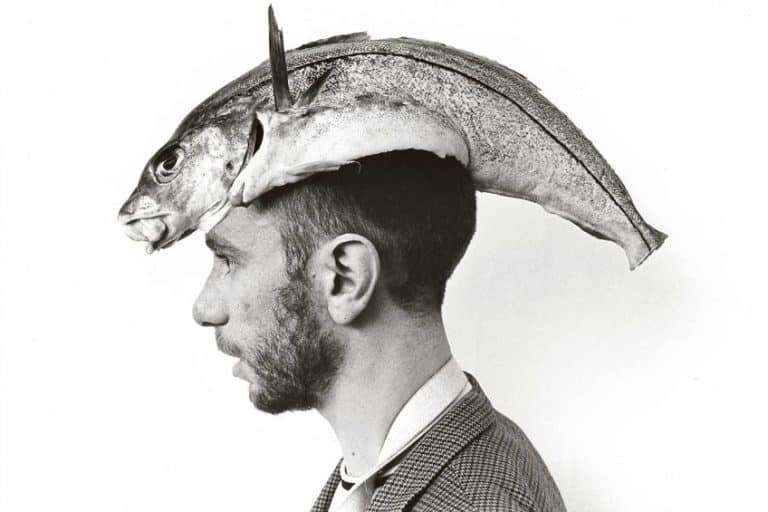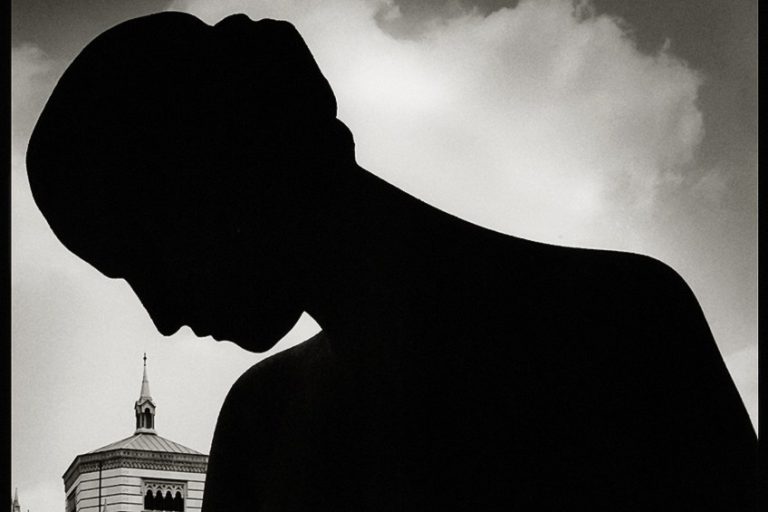Minimalist Photography – The Power of Simplicity
Minimalism in photography is a visually stunning and thought-provoking genre that transcends the confines of traditional imagery. Championed by minimalist photographers, this art form exemplifies the power of less being more. By paring down subjects to their essential elements, minimalist photography reveals the captivating beauty that lies in simplicity. It invites viewers to contemplate the profound impact of subtle details, where every element serves a purpose in the composition, and where less clutter means more room for imagination and interpretation. In this realm of visual serenity, minimalist photography stands as a testament to the notion that art can thrive in the absence of excess.
What Is Minimalism in Photography?
In the realm of visual arts, photography stands as a unique medium that can distill the essence of a moment into a single frame. Amidst the myriad styles and techniques that photographers employ to capture the world’s beauty, minimalism in photography emerges as a profound and evocative approach. The concept of minimalism in photography transcends mere simplicity and, instead, elevates the art form to a philosophy that seeks to convey the extraordinary in the ordinary. Let us embark on a journey to unravel the captivating world of minimalism in photography, exploring what it is and how it has been embraced by minimalist photographers to create powerful, minimalist photos.
At its core, minimalism in photography is the art of removing superfluous elements to reveal the profound beauty in simplicity.
It is about distilling the image down to its fundamental elements, creating a harmonious and serene composition that captures the viewer’s attention and emotions. Minimalist photographers, often referred to as “visual poets,” master the skills of capturing moments that evoke deep contemplation and appreciation. They understand that less can indeed be more, and that beauty is often found in the spaces between, not in the cluttered and chaotic. Minimalistic photos, the products of this aesthetic and philosophical approach, tend to employ certain key elements to achieve their desired effects. The first is negative space, which is the area around the subject or the subject itself – a vital component in minimalistic photography. This space allows the viewer’s eye to rest and encourages contemplation.
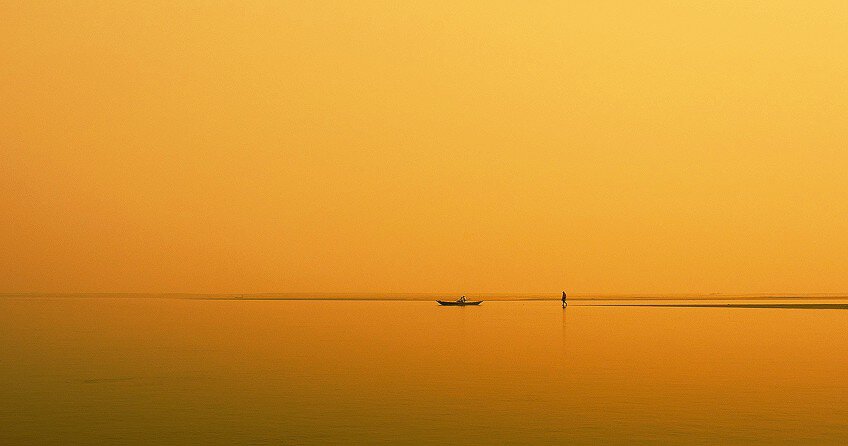
It can be an empty sky, a barren wall, or an expansive field, but its purpose remains the same: to accentuate the subject and its significance. Another critical aspect is simplicity. Minimalist photography often features subjects that are uncomplicated, uncluttered, and unadorned. It can be a lone tree in a vast desert, a solitary figure in an empty street, or a single, striking object. The emphasis on simplicity allows the viewer to focus on the subject’s intrinsic beauty and imbues the image with a sense of purity and serenity. In the realm of minimalism in photography, composition is paramount. The rule of thirds, a well-known guideline, is frequently used by minimalist photographers to create balanced and engaging compositions. This technique separates your shots into nine equal parts, with your subject and point of interest being placed along the lines or at their intersections.
This approach provides a pleasing sense of equilibrium and ensures that the subject is not overwhelmed by the negative space.
Contrast and texture play an essential role in minimalistic photos. By juxtaposing elements with differing tones, textures, or forms, photographers create visual interest and highlight the subject’s significance. The play of light and shadow, which is central to minimalist photography, contributes depth and dimension to the image. A lone flower against a dark background, a weathered door bathed in soft light, or a stark tree in the midst of a snow-covered landscape all demonstrate the power of contrast and texture in minimalist photography. Color is another key consideration in minimalistic photos. While color can be an effective part in conveying emotion, many minimalist photographers instead implement a monochromatic or limited color palette, as this helps to reduce distractions while enhancing the impact of the subject. Black and white photography allows for a timeless and contemplative quality that complements the simple aesthetic.

The minimalist approach in photography does not merely distill the image down to its basic elements but also captures a moment’s emotional essence. Minimalist photographers are skilled in recognizing the profound beauty that resides within simplicity. They possess a unique ability to transform the ordinary into the extraordinary, crafting images that invite viewers to pause, reflect, and find solace in the tranquility of the frame. Minimalism in photography is a philosophy, a way of seeing and experiencing the world through the lens of simplicity and serenity. It encourages us to embrace the extraordinary in the ordinary, to seek beauty in the spaces between the clutter, and to find solace in the quietude of minimalistic photos. The minimalist photographers, with their mastery of negative spaces, simplicity, composition, contrast, texture, and color, invite us to explore a world of visual poetry where less truly becomes more.
In their eloquent visual language, they offer us a compelling and profound insight into what is minimalism in photography and how it captivates our hearts and minds.
What Are the Key Elements of Minimalism in Photography?
Among the diverse styles and techniques that photographers employ in their art, minimalism in photography stands as a captivating and powerful approach. It is a philosophy that celebrates the beauty of simplicity, inviting us to explore the world through a different lens. In this exploration of the key elements of minimalism in photography, we delve into the art of distillation, where less truly becomes more. At the heart of minimalism in photography, you will find the art of reduction, a way to distill a scene or a subject down to its most fundamental elements.

This reductionist approach aims to eliminate any distractions and superfluous details, focusing on what is truly essential. It is about creating visual harmony amidst the noise of the world, finding serenity in simplicity. Let us unravel the key elements that define minimalism in photography and make it a distinctive and captivating style.
Negative Space
Negative space is one of the most fundamental aspects of minimalistic photography. It is the area around the subject, often left intentionally empty or uncluttered. This space serves as a visual pause, allowing the viewer’s eye to rest and encouraging contemplation.
Whether it is a vast expanse of sky, a simple wall, or a tranquil body of water, negative space plays a crucial role in highlighting the subject’s significance and creating a sense of visual balance.
Simplicity
Simplicity can be found at the core of practically any minimalist photograph. Minimalist photographers excel at capturing subjects that are uncluttered, uncomplicated, and often solitary. These subjects, often found in everyday life, may include a single tree against a clear sky, a lone figure in an empty street, or a single, striking object. The emphasis on simplicity allows the viewer to focus on the inherent beauty of the subject and imparts a sense of purity and tranquility to the image.

Composition
Composition is a key element in any form of photography, and it plays a pivotal role in minimalism. As previously mentioned, the rule of thirds should be seen as a fundamental guideline in photography, and is often implemented in order to create balanced and engaging compositions. This technique divides the frame into nine equal parts, with subjects and points of interest positioned along the lines or at their intersections.
Such careful composition ensures that the subject is not overwhelmed by the negative space and creates a sense of harmony that is pleasing to the eye.
Contrast and Texture
Contrast and texture are vital elements that add depth and dimension to minimalistic photos. By juxtaposing elements with differing tones, textures, or forms, photographers create visual interest and emphasize the subject’s significance. The interplay of light and shadow, central to minimalist photography, adds a sense of visual richness. A single flower against a dark background, a weathered door bathed in soft light, or a stark tree in a snow-covered landscape – all these examples showcase the power of contrast and texture in minimalistic photography.

Color or Its Absence
Color, or the absence thereof, also plays a pivotal role in minimalistic photos. While color can be a potent tool in conveying emotion, many minimalist photographers opt for a monochromatic or limited color palette. Reducing the color palette minimizes distractions, allowing the viewer to focus on the subject’s intrinsic beauty. Black and white photography, in particular, offers a timeless and contemplative quality that complements the minimalist aesthetic. These key elements work in harmony to create images that embody the essence of minimalism.
But minimalism in photography is not just about adhering to these principles; it is a way of seeing and experiencing the world.
It encourages us to find beauty in simplicity, to seek serenity in the unadorned, and to embrace the extraordinary in the ordinary. Minimalism in photography is an art of revelation, unveiling the hidden beauty within simplicity. It is an invitation to explore the world with a contemplative eye, to appreciate the subtleties of life that often go unnoticed in our fast-paced existence. Minimalistic photos are not just images; they are stories, they are moments frozen in time, and they are windows into the soul of the photographer.
How to Capture Minimalist Photography
In the age of ceaseless visual noise and information overload, minimalism in photography offers a compelling antidote. It is a philosophy that seeks beauty in simplicity, distilling moments and subjects down to their essential elements. Minimalist photography invites us to pause, observe, and appreciate the serene and unadorned. Whether you are a seasoned photographer or a budding enthusiast, this exploration will guide you on how to capture your own minimalist photography, unlocking the art of visual tranquility.

Develop Your Observational Skills
Minimalist photography starts with your perception of the world. To capture minimalist shots, you need to become a keen observer. Train your eye to recognize simplicity amidst the chaos. Whether you are in a bustling city or the tranquil countryside, look for scenes, objects, or details that stand out in their uncluttered beauty. It could be a solitary tree against a clear sky, a single subject in a vast space, or the interplay of light and shadow.
Keep in mind that less is often more in this art form.
Embrace Negative Space
Negative space is a cornerstone of minimalist photography. It is the empty or unoccupied areas in your frame that give your subject room to breathe. By using negative space in an effective manner, you will be able to create a natural sense of balance, serenity, as well as visual harmony. You can experiment by placing your subject off-center to draw attention to the empty space surrounding it. Balance and symmetry play a crucial role in achieving a minimalist composition.
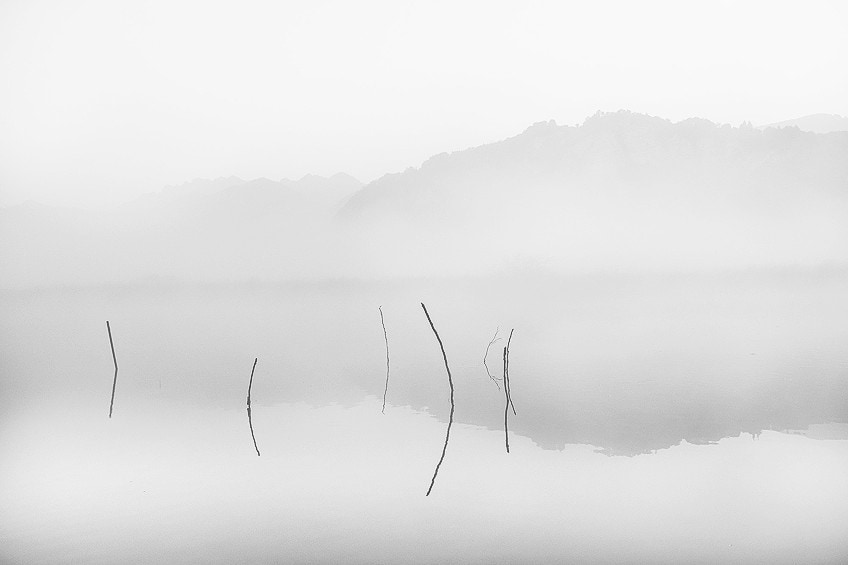
Mindful Composition
Composition is at the heart of minimalist photography. Pay attention to the rules of composition, like the widely incorporated rule of thirds, leading lines, and symmetry. These guidelines can help you create strong and engaging images. Explore the interplay of shapes, patterns, and lines in your frame.
Simplicity does not mean randomness; it involves purpose and structure within your composition.
Harness the Power of Light
Light is the lifeblood of photography, and in minimalist photography, it is no different. Soft, diffused natural light can enhance the elegance of your subject. Golden hours during sunrise and sunset provide a warm, low-angled light that casts long, beautiful shadows, adding a touch of magic to your shots. Patience is essential when waiting for the right lighting conditions, as it can transform an ordinary scene into a masterpiece.
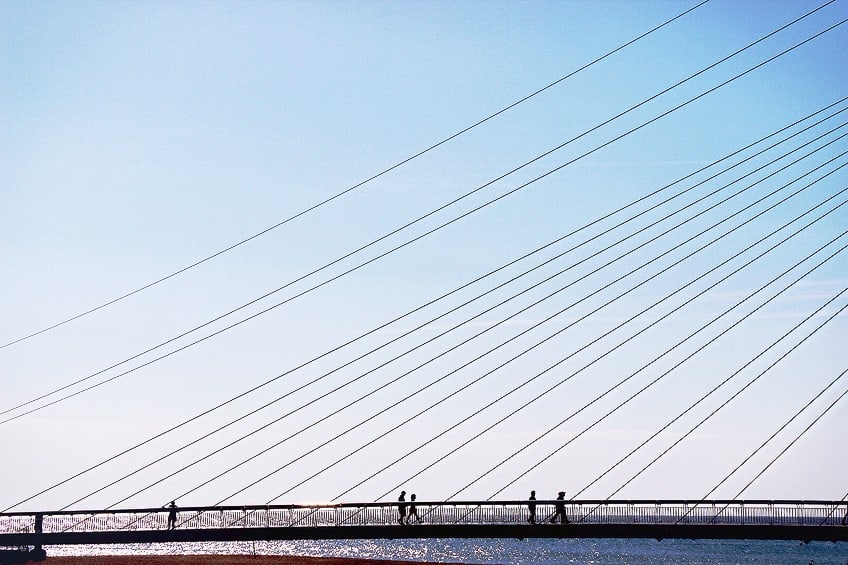
Choose Your Color Palette Wisely
Color in minimalist photography should be used thoughtfully. While some minimalist photos are monochromatic, others rely on a limited color palette. The choice of colors can significantly influence the mood and impact of your image. Study the psychology of color to understand how it can affect emotions and perceptions.
A pop of color in an otherwise muted scene can be attention-grabbing, while a harmonious palette of soft pastels can evoke tranquility.
Post-Processing With Restraint
Minimalist photography is about capturing the essence of a scene, so post-processing should be approached with subtlety. Resist the temptation to over-manipulate your images. Focus on enhancing clarity and maintaining the pure, unadulterated essence of your subject. Strive for a natural and unforced look in your final edits.

Minimalist photography is a journey of both external and internal exploration. It challenges you to see the world differently, to seek beauty in the unadorned, and to convey powerful messages through simplicity. Mastering this art form requires patience, a discerning eye, and the ability to appreciate the profound beauty in the everyday. As you embark on your minimalist photography journey, remember that it is not just about capturing images; it is about capturing moments, emotions, and stories in their purest and most elegant form.
Some Famous Minimalist Photographers
Minimalist photography is a genre that celebrates the beauty of simplicity, emphasizing the power of minimalism in visual storytelling. Several renowned photographers have made significant contributions to this art form, creating iconic works that capture the essence of minimalism.
In this exploration, we will delve into the lives and works of a few famous minimalist photographers, shedding light on their best-known pieces and the profound impact they have had on the world of photography.
Saul Leiter (1923 – 2013)
| Artist Name | Saul Leiter |
| Nationality | American |
| Place of Birth | Pittsburgh, Pennsylvania, United States |
| Date of Birth and Death | 3 December 1923 – 26 November 2013 |
| Most Famous Work | Canopy (1958) |
Saul Leiter, an American photographer, is known for his pioneering work in color and abstraction within the realm of minimalism. His street photography, particularly his exploration of umbrellas, rain, and reflections, captures moments of quiet beauty amid urban chaos. Through Boards, 1957 is a striking example of his work, where the soft focus and use of reflections create a poetic and contemplative image. Leiter’s ability to find the extraordinary in the ordinary is a hallmark of his minimalist approach.

Fan Ho (1931 – 2016)
| Artist Name | Fan Ho |
| Nationality | Chinese |
| Place of Birth | Shanghai, China |
| Date of Birth and Death | 9 October 1931 – 19 June 2016 |
| Most Famous Work | Cleaning (1950) |
Fan Ho, a Chinese photographer and film director, is renowned for his captivating street photography, particularly capturing the streets of Hong Kong in the 1950s and 1960s. Approaching Shadow is one of his most iconic photographs, featuring a figure walking along a sunlit alleyway while a shadowy silhouette approaches from the opposite direction. Ho’s ability to find poetry in the chaos of city life exemplifies his mastery of minimalist storytelling.
Hiroshi Sugimoto (1948 – Present)
| Artist Name | Hiroshi Sugimoto |
| Nationality | Japanese |
| Place of Birth | Tokyo, Japan |
| Date of Birth and Death | 23 February 1948 – Present |
| Most Famous Work | Gemsbok (1982) |
Hiroshi Sugimoto, a Japanese photographer born in 1948, is celebrated for his serene and timeless Seascapes series. His minimalist approach to capturing the world’s oceans is breathtaking. In works like Baltic Sea, Rugen, Sugimoto employs long exposures to create images that blur the boundary between sea and sky, invoking a sense of tranquility and timelessness. His photographs are a visual meditation on the eternal and the simple beauty that lies in the natural world.
Michael Kenna (1953 – Present)
| Artist Name | Michael Kenna |
| Nationality | British |
| Place of Birth | Wines, United Kingdom |
| Date of Birth and Death | 20 November 1953 – Present |
| Most Famous Work | Taushubetsu Bridge, Nukabira, Hokkaido, Japan (2008) |
Michael Kenna, a British photographer, has dedicated his career to mastering the art of minimalist black and white photography. His portfolio often features remote and tranquil landscapes, with a dreamlike quality. One of the most iconic images, Mont St Michel, France, exemplifies the elegance of minimalism.
The lone tree in the foreground, silhouetted against the ethereal backdrop of Mont St Michel, is a testament to Kenna’s ability to convey deep emotion and serenity through simplicity.
Uta Barth (1958 – Present)
| Artist Name | Uta Barth |
| Nationality | German |
| Place of Birth | Berlin, Germany |
| Date of Birth and Death | 28 January 1958 – Present |
| Most Famous Work | Field #20 (1997) |
Uta Barth, a German-American artist and photographer, is acclaimed for her thought-provoking exploration of the everyday and the unnoticed. Her Ground series features photographs that emphasize the interplay of light and shadow on simple surfaces like walls and floors. Untitled (97.10), one of her most significant works, invites viewers to see the beauty in minimalism and underscores the transformative role of light in photography.
Minimalist photography is a celebration of simplicity, a visual language that speaks volumes with the barest of elements. It invites us to slow down, observe, and appreciate the elegance in the unadorned. Through the artful use of negative space, balanced composition, and thoughtful lighting, minimalist photographers distill the world’s chaos into moments of serene clarity. In a world filled with visual noise, minimalist photography offers a peaceful respite and a powerful reminder that, more often than not, less is truly more.
Frequently Asked Questions
What Is Minimalist Photography?
Minimalist photography is a style of photography that emphasizes simplicity and the use of minimal elements in a composition. It involves capturing the essence of a subject or scene by removing distractions and focusing on the most vital elements.
What Are Some Key Principles of Minimalist Photography?
Key principles of minimalist photography include the use of negative space, balanced composition, simplicity, and a focus on essential elements. It often involves a reduction of visual clutter to create a clean and uncluttered image.
How Can I Improve My Skills in Minimalist Photography?
To improve your skills in minimalist photography, practice is essential. Study the works of famous minimalist photographers, experiment with different compositions, and continually refine your ability to see and capture the beauty in simplicity. Critique your own work and seek feedback from others to refine your craft.
Duncan completed his diploma in Film and TV production at CityVarsity in 2018. After graduation, he continued to delve into the world of filmmaking and developed a strong interest in writing. Since completing his studies, he has worked as a freelance videographer, filming a diverse range of content including music videos, fashion shoots, short films, advertisements, and weddings. Along the way, he has received several awards from film festivals, both locally and internationally. Despite his success in filmmaking, Duncan still finds peace and clarity in writing articles during his breaks between filming projects.
Duncan has worked as a content writer and video editor for artincontext.org since 2020. He writes blog posts in the fields of photography and videography and edits videos for our Art in Context YouTube channel. He has extensive knowledge of videography and photography due to his videography/film studies and extensive experience cutting and editing videos, as well as his professional work as a filmmaker.
Learn more about Duncan van der Merwe and the Art in Context Team.
Cite this Article
Duncan, van der Merwe, “Minimalist Photography – The Power of Simplicity.” Art in Context. November 9, 2023. URL: https://artincontext.org/minimalist-photography/
van der Merwe, D. (2023, 9 November). Minimalist Photography – The Power of Simplicity. Art in Context. https://artincontext.org/minimalist-photography/
van der Merwe, Duncan. “Minimalist Photography – The Power of Simplicity.” Art in Context, November 9, 2023. https://artincontext.org/minimalist-photography/.






